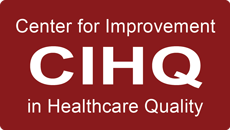Reducing the risk of Legionella growth and spread in a healthcare facility is possible with proactive planning and actions using a Water Management Plan (WMP). Healthcare facility personnel can develop and implement a WMP to identify any water system issues that can lead to a Legionella infestation. WMPs not only provide clear guidance for all personnel involved in facility maintenance and infection prevention but The Center for Medicare & Medicaid Services requires them for accreditation compliance. The WMP supports and documents efforts to reduce Legionella in the building’s water system, thereby reducing the risk of vulnerable patients, staff, or visitors becoming ill with Legionnaires’ disease (LD).
Developing a WMP
According to the Centers for Disease Control and Prevention (CDC), “actions that reduce the risk of Legionella growing and spreading in building water systems can help prevent problems that lead to LD.” The WMP is the tool that healthcare facility personnel use to detail the actions that can reduce the risk of Legionella. The WMP designates who will be responsible for developing and implementing the WMP; it incorporates control measures, verification procedures, and validation methods. WMPs do not need to be overly complex, but they do need to be detailed. When control measures are in place (e.g., monitoring water temperature, disinfectant, pH) and validation procedures are followed (e.g., environmental sampling), facility personnel can readily determine if there is a risk of Legionella growth and spread and take action to reduce the risk.
The first step in identifying if a healthcare facility’s water system is at risk for Legionella is to conduct a Legionella Risk Assessment. The assessment, carried out by facility personnel or outside experts, offers a foundation for the WMP. The risk assessment may identify areas of high risk where immediate actions are needed. The CDC offers guidance for conducting a Legionella Risk Assessment with specific information for healthcare facilities. ASHRAE Standard 188-2018 “Legionellosis: Risk Management for Building Water Systems” also provides information for conducting a risk assessment and developing a WMP.
Elements of the WMP
- Develop a Building Water System Description. This is a written description of the facility that includes location, age, uses, occupants, and visitors.
- Create a Water System Description. The written document will include a general summary for receiving, cold water distribution, heating, hot water distribution, waste, uses of water, and aerosol-generating devices (e.g., hot bubs, decorative fountains, cooling towers), and process flow diagrams.
- Conduct Hazard Analysis and Determine Control Measures. This section documents the points in the water system where critical limits can be monitored and where control can be applied.
- Describe the Control (e.g., monitoring method and frequency), Verification, Corrective Action, and Validation Procedures. Actions here involve identifying the verification steps to show that the WMP is being followed as written and validation to show that the program is effective in reducing the risk of Legionella.
- Documentation of WMP Actions and Validation Steps. Documentation can be logbooks that show the actions taken, such as checking water temperature and conducting environmental sampling and documenting results.
- Provide procedures to follow if there are reports of Legionnaires’ disease at the facility.
Benefits of a WMP
With the WMP created, the WMP Team can implement all actions while also ensuring compliance with accreditation requirements. Healthcare facility patients, employees, and visitors all benefit from an effective WMP. Following a WMP helps reduce the risk of Legionella growing and spreading unchecked in the water system. Because healthcare facilities serve vulnerable populations, following a WMP adds another way to provide for the safety of people who may be susceptible to the dangers of breathing in Legionella bacteria from a facility's water sources and developing Legionnaires’ disease.

